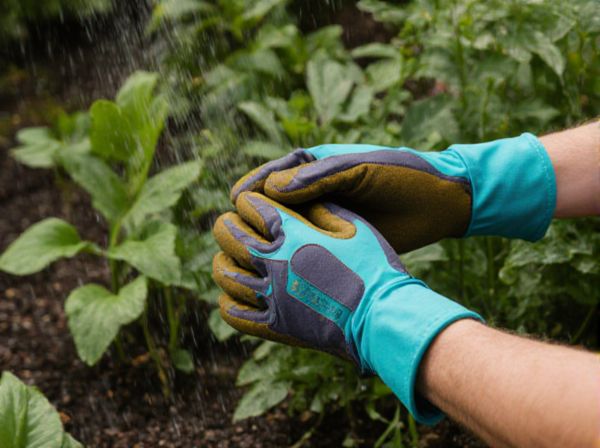
Rain Garden vs Bog Garden Illustration
Rain gardens and bog gardens both manage water but differ in design and plant selection; rain gardens are shallow depressions that capture stormwater runoff with native, drought-tolerant plants, while bog gardens mimic naturally acidic, waterlogged conditions with moisture-loving, acid-tolerant species. Rain gardens improve drainage and reduce flooding by filtering water through soil layers, whereas bog gardens create a unique habitat that supports specialized flora like carnivorous plants. Choosing between the two depends on site conditions and desired ecological benefits, emphasizing water management or specialized plant cultivation.
Table of Comparison
| Feature | Rain Garden | Bog Garden |
|---|---|---|
| Purpose | Manage stormwater runoff, improve water quality | Create wet, acidic habitat mimicking natural bogs |
| Water Source | Rainwater and surface runoff | Constant moisture, often groundwater or nearby water body |
| Soil Type | Well-drained, sandy or loamy soils | Peaty, acidic, waterlogged soils |
| Water Level | Intermittent saturation after rains | Consistently saturated |
| Common Plants | Native grasses, perennials, shrubs tolerant to wet-dry cycles | Sphagnum moss, carnivorous plants, ericaceous shrubs |
| Maintenance | Low to moderate; occasional weeding and irrigation | Higher; monitoring water levels and acidity |
| Environmental Benefits | Reduces runoff, filters pollutants, supports pollinators | Supports unique biodiversity, carbon sequestration |
Introduction to Rain Gardens and Bog Gardens
Rain gardens are designed to capture and filter stormwater runoff, using native plants that thrive in periodically wet soils, effectively reducing erosion and improving water quality. Bog gardens replicate natural bog ecosystems with consistently moist, acidic, and nutrient-poor conditions, supporting specialized plants like carnivorous species and sphagnum mosses. Both garden types enhance biodiversity and manage water sustainably, but rain gardens focus on stormwater management while bog gardens emphasize ecological habitat preservation.
Key Differences Between Rain Gardens and Bog Gardens
Rain gardens collect and filter stormwater runoff using native plants adapted to periodic flooding and dry conditions, promoting water infiltration and reducing erosion. Bog gardens simulate natural bog ecosystems, requiring consistently wet, acidic conditions with sphagnum moss and specialized moisture-loving plants. Unlike rain gardens, bog gardens maintain constant saturation and often serve as decorative, habitat-rich microenvironments rather than functional stormwater management systems.
Ideal Locations for Rain Gardens and Bog Gardens
Rain gardens are ideal for residential areas with moderate slopes and well-draining soils, often located near downspouts or low-lying spots to capture stormwater runoff. Bog gardens thrive in consistently moist, shaded environments with poor drainage, such as near ponds or natural wetlands, supporting acid-loving plants. Selecting the right location ensures optimal water retention and plant health for both garden types.
Soil and Water Requirements
Rain gardens require well-draining soil mixed with sand and compost to manage stormwater runoff effectively, preventing waterlogging and promoting infiltration. Bog gardens thrive in consistently saturated, acidic soils rich in organic matter, maintaining standing water or soggy conditions suitable for moisture-loving plants. Proper soil composition and water retention are critical for each garden type to support their distinct plant communities and ecological functions.
Plant Selection for Rain Gardens
Rain garden plant selection prioritizes native species that thrive in both wet and dry conditions, such as switchgrass, blue flag iris, and Joe-Pye weed, promoting water filtration and erosion control. These plants are adapted to periodic inundation and drought, creating a resilient and sustainable landscape feature that supports local wildlife. Unlike bog garden plants, rain garden species tolerate fluctuating moisture levels without requiring consistently acidic, saturated soil.
Plant Selection for Bog Gardens
Plant selection for bog gardens prioritizes moisture-loving species adapted to consistently wet, acidic conditions, including carnivorous plants like Sarracenia and Drosera, as well as bog-loving sedges and carnivorous pitcher plants. These plants thrive in saturated soils with low nutrient availability, contrasting with rain gardens that accommodate a broader range of drought-tolerant and flood-tolerant species. Choosing native bog plants ensures ecological harmony and supports local wildlife while maintaining the garden's natural hydrology.
Benefits of Rain Gardens for Home Landscapes
Rain gardens effectively manage stormwater runoff by capturing and filtering rainwater, reducing erosion and groundwater pollution. They support native plants and increase biodiversity, creating habitat for pollinators and wildlife. Home landscapes with rain gardens improve water quality while adding aesthetic value and lowering irrigation needs.
Benefits of Bog Gardens for Biodiversity
Bog gardens create specialized wet habitats that support diverse native plant species and unique wildlife adapted to acidic, nutrient-poor conditions. These gardens enhance local biodiversity by providing breeding grounds for amphibians, insects, and moisture-loving birds, contributing to ecosystem stability and resilience. Maintaining bog gardens aids in water filtration and carbon sequestration, offering significant ecological benefits beyond ornamental value.
Maintenance Tips for Rain and Bog Gardens
Rain gardens require regular monitoring of water flow and soil moisture to prevent erosion and ensure proper drainage, with seasonal weeding and mulching to maintain plant health. Bog gardens benefit from consistently moist, acidic soil conditions and need careful pruning of moisture-loving plants to avoid overcrowding and promote air circulation. Both garden types thrive with native plant selections adapted to their specific water regimes, reducing the need for fertilizers and minimizing pest issues.
Choosing the Right Garden for Your Landscape Needs
Rain gardens effectively manage stormwater runoff by using native plants like sedges and rushes to absorb excess water, making them ideal for areas prone to flooding. Bog gardens, characterized by acidic, consistently wet soil and plants such as carnivorous species and irises, suit landscapes that mimic natural wetlands or require unique plant habitats. Selecting between a rain garden and a bog garden depends on your site's soil drainage, moisture levels, and desired plant ecosystem, ensuring sustainable landscape functionality and aesthetic appeal.
Rain Garden vs Bog Garden Infographic

 gardendif.com
gardendif.com